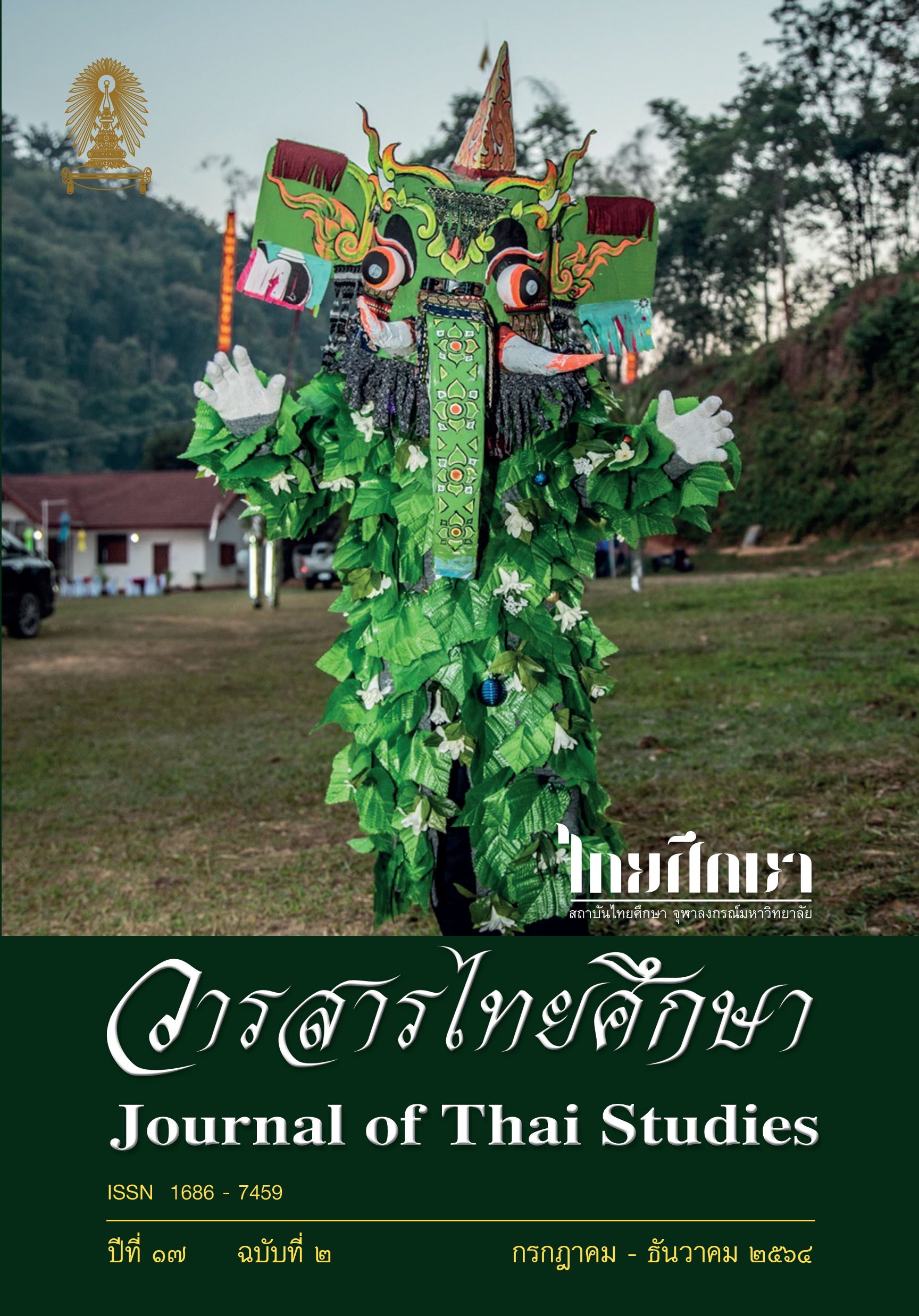Changes at Wat Thai Samakkhi in Mae Kasa Sub-District Mae Sot District, Tak Province to Accommodate Religious Tourism
Main Article Content
Abstract
This research aimed to collect historical background and information on Wat Thai Samakki at Mae Kasa Sub-district, Mae Sot District, Tak Province and to study changes made to the temple in order to accommodate religious tourism. The data was collected from secondary sources, indepth interviews conducted during a field trip and non-participant observations, employing creative folklore as a frame of study.
The results revealed that Wat Thai Samakkhi was built in 1943. At that time, there was only a main hall (Phra Ubosot) and a meeting hall Phra Viharn) for performing rituals and ceremonies. It was not until 2010 that the temple became well-known and was visited by an increasing number of tourists. Since then, several changes have been made to the temple, including the construction of Buddha images, statues and buildings. The research found that folk culture was directly applied to accommodate people’s need for religious trips; for example, the reproduction of traditional beliefs through symbols and material objects and the attempts to preserve cultures, blend the old and new and create new traditions in organizing a wide range of activities for tourists throughout the year.
Downloads
Article Details

This work is licensed under a Creative Commons Attribution-NonCommercial-NoDerivatives 4.0 International License.
Journal of Thai studies is licensed under a Creative Commons Attribution-Noncommercial-NoDerivatives4.0 Intenational (CC BY-NC-ND 4.0) licence, unless otherwise stated. Plese read our Policies page for more information on Open Access, copyright and permissions.
References
Kamawan, K. (1994). Raymond William’s Thoughts in Cultural Study and the Study of Consumerism. (Master Thesis). Thammasart University, Bangkok, Thailand.
Kitkosol, M. (2017). Phon Kan Damnoen Ngan Khrongkan Muban Raksa Sinha Ban Thai Samakkhi Mu 9 Tambon Mae Kasa Amphoe Maesot Cangwat Tak [The Operation of a Village’s Five Precepts Project, Ban Thai Samakkhi Moo 9, Mae Kasa Sub-district, Mae Sot District, Tak].
Nathalang, S. (2016). Khatichon Sangsan: Bot Sangkhro Lae Thritsadi [“Creative folklore”: synthesis and theory]. Bangkok: Princess Maha Chakri Sirindhorn Anthropology Centre (Public Organization).
Nathalang, S. (2015). “Prapheni Sangsan” Nai Sang Khom Thai Ruamsamai [“Creative Tradition” in Contemporary Thai Society]. Bangkok: Princess Maha Chakri Sirindhorn Anthropology Centre (Public Organization).
National News Bureau of Thailand. (2018). The Vice Governor of Tak Province Presiding over the Opening of The Temple Tourism Project in 55 Secondary Provinces. Retrieved from http://thainews.prd.go.th/th/website_th/news/news_detail/WNECO6109010010008?fbclid=IwAR1VkzKfuW65IpTkD_hHXuinSdNGaTYVxWTrgRMfwUfOgzjn18Q3ceVN
Rittem, P. (2015). Religious and Cultural Tourism Management Model in Buddhist Temples. Journal of Liberal Arts, Ubonratchathani University 11(1), 1-23.
Personal Interviews
Tikkhayano, C. (2019, September 17). Personal Interview.
Tikkhayano, C. (2019, September 26). Personal Interview.
Tikkhayano, C. (2019, October 9). Personal Interview.


